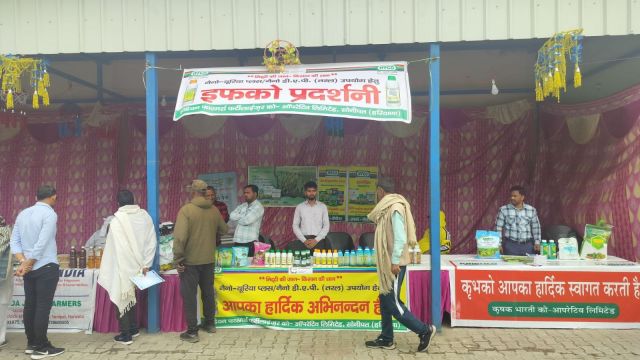Are nano fertilisers future of farming: IFFCO, farmers think so, experts cautious
Scientists and experts have claimed that nano fertilisers are relatively newer technologies and still need more research to make their case. “Nano DAP/urea is a new science and is in an experimental phase. More research is required to prove its efficiency,” a senior agricultural scientist said.
 IFFCO is promoting its nano urea and nano DAP, which comes in handy 500 ml bottles.
IFFCO is promoting its nano urea and nano DAP, which comes in handy 500 ml bottles. As one entered Krishi Vigyan Kendra’s (KVK’s) Kisan Mela in village Halalpur in Sonipat, Indian Farmers Fertiliser Cooperative’s (IFFCO’s) stall seemed busy on a windy Thursday. Among a host of farm related chemicals, both nano urea and nano DAP were inviting the most attention.
Both urea and DAP (Diammonium Phosphate) are heavily subsidised fertilisers, and while around 10 per cent of the former is imported, 60 per cent of DAP comes from foreign countries. To reduce this dependency, IFFCO is promoting its nano urea and nano DAP, which comes in handy 500 ml bottles.
 The mela also saw Vikas Kohar, 42, a farmer from Chhanauli village in Kharkhoda, Sonipat. Kohar said that he has been using nano DAP and urea for the last four years and is seeing positive results.
The mela also saw Vikas Kohar, 42, a farmer from Chhanauli village in Kharkhoda, Sonipat. Kohar said that he has been using nano DAP and urea for the last four years and is seeing positive results.
“Urea costs about Rs 1,500-Rs 2,000 per bag and to reduce this cost, the government gives subsidies to farmers. Also, when it is left in the soil, it releases a lot of energy, killing the organisms present in the soil, making it infertile,” said Sahil Jangda, field officer, IFFCO. Jangda said that problem is with DAP too as its efficacy is just 40 per cent, making the other 60 per cent stay in one place, thereby negatively impacting the soil. “A field can absorb about 30- 40 per cent urea, but nano urea has 90 per cent efficacy. Also, the nano DAP does not come in contact with soil because it is sprayed. Also, compared to one DAP of 45 kg, nano DAP bottle is of only 500 ml. Both cover same area. While a DAP bag costs Rs 1,350, (without the subsidy), a nano DAP bottle comes at Rs 600,” Jangda added.
The mela also saw Vikas Kohar, 42, a farmer from Chhanauli village in Kharkhoda, Sonipat. Kohar said that he has been using nano DAP and urea for the last four years and is seeing positive results.
“Initially, IFFCO offered nano urea that had 4 per cent nitrogen, so the result was not that great, now they are offering with 16 per cent nitrogen, so outcome has improved,” Kohar said. The farmer said that if 45 kg urea is used, roughly 9 kg gets absorbed, however the nano urea has an efficacy of 90 per cent. He also said that in urea, results are visible in 5-7 days, but with the nano fertiliser, results appear in
only two days.
“I sow in 10 acres and every acre requires 3-4 bags of normal urea, so I need 30-40 bags in total. Carrying such a weight becomes an issue. In this aspect too, nano urea helps us out,” Kohar said.
In late 2024, Haryana saw shortage of traditional DAP too. Kohar said at that time too nano DAP came as a saviour. “For treating our seeds, I used nano DAP this time. Its one bottle covers two acres. On the contrary one bag of traditional DAP covers just one acre,” the farmer added.
However, scientists and experts have claimed that nano fertilisers are relatively newer technologies and still need more research to make their case. “Nano DAP/urea is a new science and is in an experimental phase. More research is required to prove its efficiency,” a senior agricultural scientist said.












